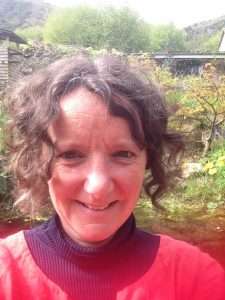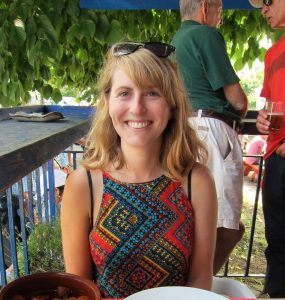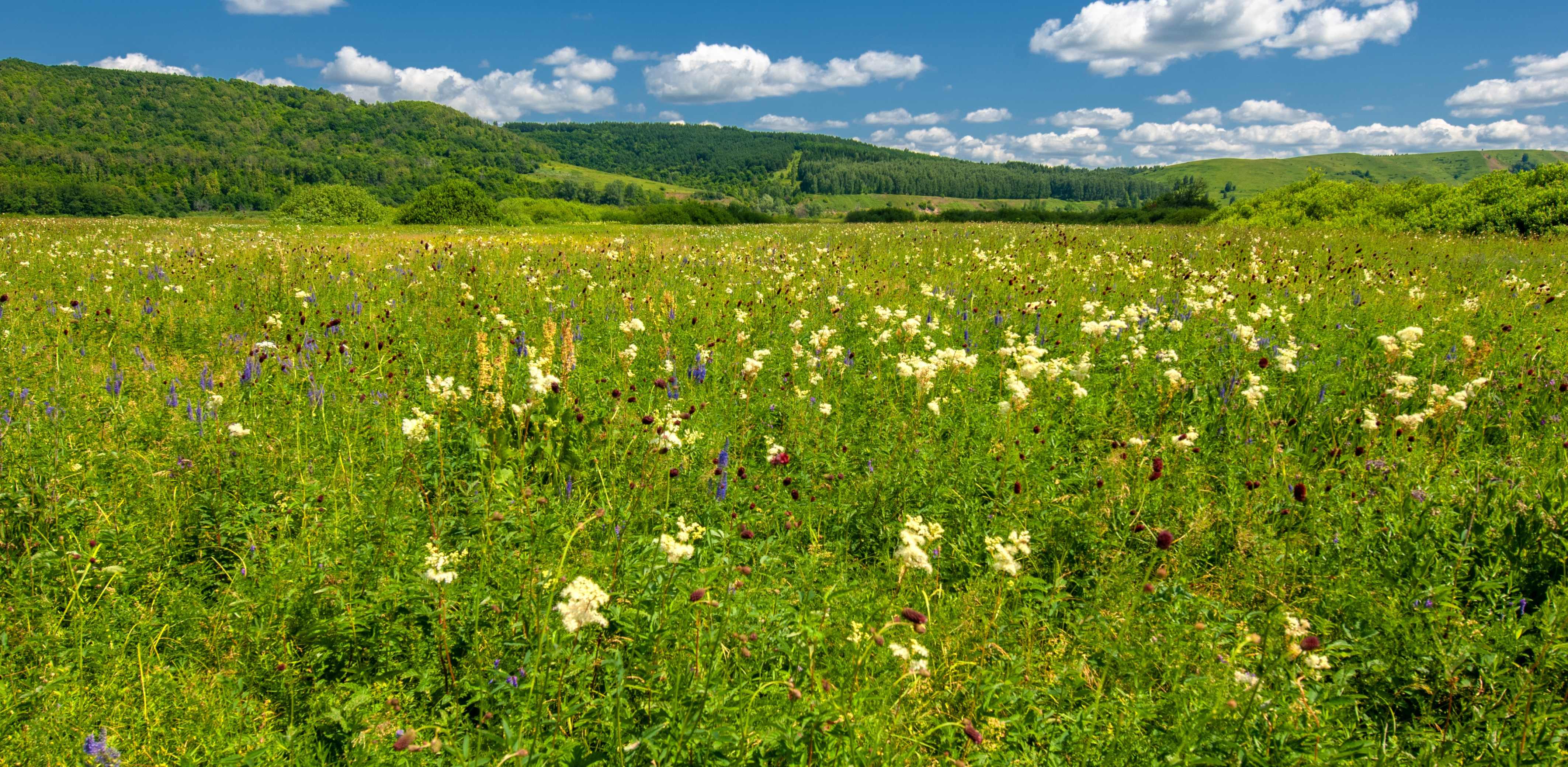Floodplain meadows: the sustainable and productive choice for landscape scale lowland floodplain restoration – by Emma Rothero, Catriona Bass and Sarah Wells
On 19th July this year, we are presenting a talk at the CIEEM summer conference on Facilitating Nature’s Recovery through Environmentally-friendly Land Management. Our talk is of course on floodplain meadows as a sustainable and productive choice for landscape scale lowland floodplain restoration. We were particularly interested in talking at this conference as we see from a national perspective a range of different models for delivering floodplain meadow restoration, and wanted to share two of them with this audience.
It is a difficult time for landowners as they make decisions about their farms futures without the certainty of knowing what schemes are going to look like, so it is important now more than ever, that we consider a range of funding and delivery models to protect the precious nature that we have left, and to encourage restoration in a profitable and sustainable way.
Floodplain meadows are highly diverse, sustainable agricultural systems. They require no artificial fertilisers yet remain productive during droughts, and recover rapidly after floods. They supply many additional benefits to society, including filtering and storage of floodwaters, sequestration of carbon and export of nutrients. Once very widespread, species rich floodplain meadows now occupy less than 3,000 ha in the UK.

Species rich floodplain meadow in the Thames Valley © Mike Dodd
However floodplains are currently managed in an unsustainable way. 70 % of floodplain land in England and Wales is in intensive agriculture, with fewer than 10% recorded as semi natural habitat, reducing the potential for floodplains to support wider benefits.
Restoration of floodplain meadows at a landscape scale is possible. We are currently working on two projects that are looking at delivery of restoration using different models.
The Thames Valley Wildflower Meadow Restoration Project (TVWMRP) is a farmer and landowner-led initiative which aims to connect up the fragments of ancient floodplain wildflower meadow along the Thames by restoring or re-creating the intervening meadows to create a continuous meadow corridor. This neighbour-to -neighbour approach that also connects a network of experts to undertake the restoration work and study the outcomes on flora, fauna, and soils, is a novel model that has already attracted high profile funding and represents a different approach to landscape-scale meadow restoration in the UK. The delivery work is very much voluntary and community led and relies on the development of farmer to farmer relationships, rather than a farmer group led by a nature conservation or otherwise funded partner. Its aspirations are long term and funding is sought year on year to fill in the gaps. Farmers are funded by a mix of agri environment schemes and philanthropic grants.
The Flourishing Floodplains GCRF Project is building on Farmer Facilitation Group in the Severn and Avon Vale, where FWAG-SW facilitate the group and are now responsible for working with the network for farmers to deliver floodplain meadow farmer activities and restoration at a wider scale. The project is using a mix of agri environment and grant money to fund restoration and the time of a project officer to develop and maintain relationships and activities. The project facilitates access to a range of expertise through the partners and is pulling together information about landholdings for a range of biodiversity interests. It is hoped that the data being collected will provide evidence which builds the case for policy to greater support meadow, pond and wetland habitats. In particular, the project is aiming to survey 1000 ha of floodplain meadow in the Vale, which will provide information to landowners that will help them apply for the new agri-environment schemes by assessing the quality of their grasslands in the context of the Priority Habitat Inventory.
The project will be looking for funding after the end of this grant to keep the network going.
Both projects are integrating community plug planting schemes on a volunteer basis to supplement restoration activity.
Click here to book your ticket to our Summer Conference
Comms information
Floodplain Meadows Partnership
https://www.floodplainmeadows.org.uk/
https://twitter.com/floodplainmead
https://www.instagram.com/floodplainmead/
Long Mead
http://www.longmeadwildlifesite.org.uk/thames-valley-wildflower-meadow-restoration-project.html
https://www.instagram.com/longmead_tvwmrp/
https://twitter.com/longmead_tvwmrp
FWAG-SW
https://twitter.com/FWAGSouthWest
https://www.instagram.com/fwagsouthwest/
https://www.facebook.com/FWAGSW/
About the authors
 Emma Rothero
Emma Rothero
Emma secured a degree in Freshwater Ecology from Liverpool University and an MSc in Applied Hydrology from University of Wales, Cardiff. She worked for the Environment Agency for 12 years as a Biodiversity Officer, advising on flood defence projects, planning applications, securing funds to help deliver partnership projects, and providing general conservation support to Environment Agency staff. She took the role of FMP Outreach Co-Ordinator in 2008, where she developed the project, and secured funds to keep it going. In 2021 she was made a Senior Knowledge Exchange Manager. At the Open University, responsible for the management of the FMP.
Sarah Wells
 Sarah joined FWAG in 2012 and has since worked with farmers to achieve environmental benefits that operate alongside the farming business. Much of Sarah’s work is linked to various agri-environment schemes, helping farmers to access support for changes to management or maintenance of valuable habitat. In more recent years Sarah has facilitated the Severn Vale Guardians farmer group with a focus on land management in the floodplain and conservation priorities such as breeding and wintering waders and floodplain meadows. Sarah also coordinates the Upper Thames Catchment Partnership and leads on various catchment projects working with farmers minimise the risk of pesticides reaching surface waters in the Upper Thames.
Sarah joined FWAG in 2012 and has since worked with farmers to achieve environmental benefits that operate alongside the farming business. Much of Sarah’s work is linked to various agri-environment schemes, helping farmers to access support for changes to management or maintenance of valuable habitat. In more recent years Sarah has facilitated the Severn Vale Guardians farmer group with a focus on land management in the floodplain and conservation priorities such as breeding and wintering waders and floodplain meadows. Sarah also coordinates the Upper Thames Catchment Partnership and leads on various catchment projects working with farmers minimise the risk of pesticides reaching surface waters in the Upper Thames.
Catriona Bass
 Catriona Bass has been farming Long Mead for over twenty years, restoring and creating habitat, managing it for wildlife, monitoring changes, and running educational and therapeutic visits. Since 2009, she has been involved in floodplain meadow creation at other sites, using green hay from Long Mead and propagating its seed by hand. In 2018, she initiated the Thames Valley Wildflower Restoration Project (TVWMRP) with her partner Professor Kevan Martin to restore and study floodplain meadows from Long Mead to Oxford. She is an environmental assessor for the Trust for Oxfordshire’s Environment. She also a writer and has been consultant for a number of NGOs.
Catriona Bass has been farming Long Mead for over twenty years, restoring and creating habitat, managing it for wildlife, monitoring changes, and running educational and therapeutic visits. Since 2009, she has been involved in floodplain meadow creation at other sites, using green hay from Long Mead and propagating its seed by hand. In 2018, she initiated the Thames Valley Wildflower Restoration Project (TVWMRP) with her partner Professor Kevan Martin to restore and study floodplain meadows from Long Mead to Oxford. She is an environmental assessor for the Trust for Oxfordshire’s Environment. She also a writer and has been consultant for a number of NGOs.
Blog posts on the CIEEM website are the views and opinions of the author(s) credited. They do not necessarily represent the views or position of CIEEM. The CIEEM blog is intended to be a space in which we publish thought-provoking and discussion-stimulating articles. If you’d like to write a blog sharing your own experiences or views, we’d love to hear from you at SophieLowe@cieem.net.
